The worlds of “BookTok” and “BookTube” have taken the internet by storm in recent years, fuelling sales of self-published books, prompting thousands to try solve a murder mystery to win a prize, and impacting the publishing industry’s approach to social media.
If you’re a fan of book content, you’ve likely felt the urge to buy the books recommended by your favourite creators.

If you’ve had to scratch this itch and indulge in some book buying, you may find it convenient — and perhaps even necessary — to adopt a system for organising, rating and reflecting on your recent reads.

While some platforms such as Goodreads and The StoryGraph offer online tracking systems for books you have read and those you plan to read, journaling offers a creative, reflective method of cataloguing your best reads.
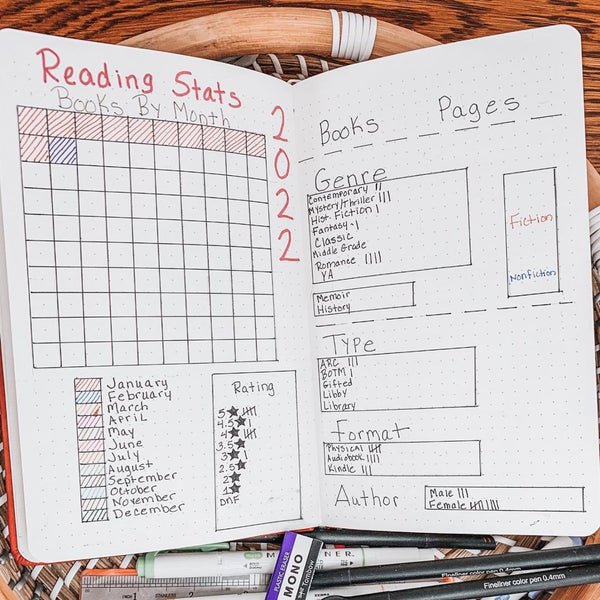
Tonya, a member of the #bookstagram community who shares reading updates on her Instagram account @thesubstitutelibrarian, said that she started using a reading journal so that she could one day look back on the reading she has done over time.
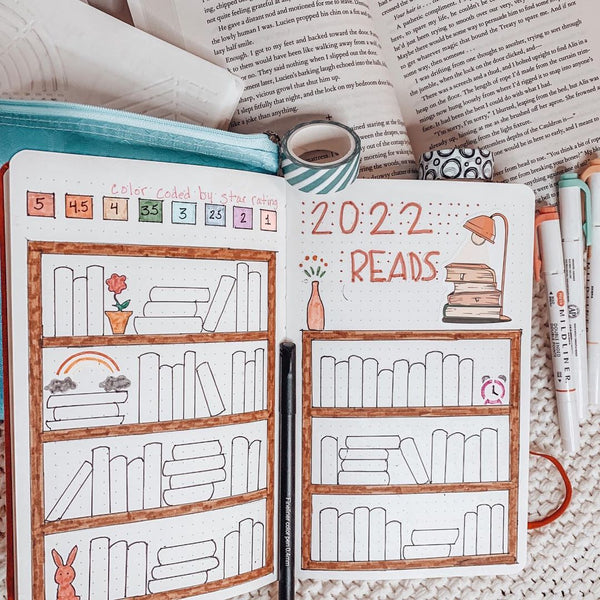
“In the beginning I really wanted something of a keepsake. I thought it would be really fun to be able to look back years later and see one year of my reading in one place,” Tonya told us.

Amaris, an avid reader who maintains a "book bujo" which she shares on her Instagram account @amarisafloria, told us that she took inspiration from the world of bullet journaling when setting up her journal: "When bullet journaling started to get popular, I was inspired to adapt some of those concepts and be more creative in tracking what and how I was reading!"

As is often the case in the world of journaling, however, it can be difficult to know where to start when figuring out how to use a journal to enhance your passion for reading.
As journal and stationery enthusiasts here at The Washi Tape Shop, we thought that we’d offer a few tips for reading enthusiasts who want to use a journal to make the reading experience even more satisfying.
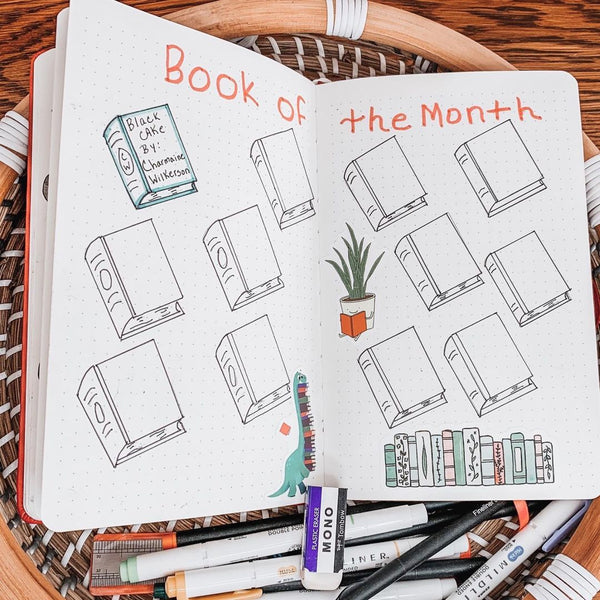
You don’t need much to start
A reading journal doesn’t require much to set up — all that’s necessary is a journal, a pen or writing instrument of your choice, and a passion for reading. "I really didn’t start out with a lot, and I still stand by the fact that you don’t need much to keep a pretty journal!"

Amaris told The Washi Tape Shop. Of course, you can use some extra tools and decorative elements to add a personal flair to your journal. (Consider our Academia Washi Tape Set, for example.)

Part of what’s great about starting a journal of any kind is that it is an opportunity to be creative. Start with the stationery and tools that you have, and grow your collection of supplies over time. For advice on what you do and don’t need when starting a journal, check out this live demo by Ioana of @MistralSpirit.

Set up a few bookish spreads
Reading logs, daily trackers, and book review spreads are just among the many spreads created by reading enthusiasts.
A great place to start when laying out your new reading journal is with your collection of books, and the books that you want to read in the future. Those familiar with the online reading community will have heard of a TBR (“to be read”) list, which can also be a great addition to a reading journal.

Tonya advises starting with a bookshelf spread, but has many other favourites which she tries to incorporate each month. “I would highly recommend the bookshelf page where you can color coordinate your reads by ratings. And the monthly recap page is a must.

The Goodreads challenge is easy to update and makes for a nice addition. Battle of the books is easily my favorite part of my journal. It’s so fun to pick your top reads each month. The A to Z reading challenge is also easy and fun to do. Also, the reading in pixels is easy to keep up with.”

Maintain and customise your tracking system
A good routine is key to maintaining your reading journal. Try not to overwhelm yourself with too many spreads which need constant updating.
Testing different spreads and trackers will allow you to develop a reading journal which suit your reading habits. If something doesn’t work for you, don’t do it. “I would not recommend trying to keep up with pages read. That was tough. I found by using the StoryGraph App, it’s easier to use their stats for that,” says Tonya.

Have fun along the way
Remember that the purpose of a reading journal is to enhance your passion for reading – not to reduce your experience to a box-ticking exercise or a chore. Keep your journaling habit alive by testing out different spreads and focusing on the ones that you find most fun to maintain.

If something doesn’t work for you, don’t fret! While it’s great to take inspiration from creators online, always adapt spreads and layouts to suit your reading habits.

As mentioned above, you can start a reading journal with basic stationery items. But if you’re interested in making the habit of maintaining a reading journal more exciting over the long-term, use the journal as a creative outlet incorporating decorative elements. (Another fun idea if you’re interested in reading and passionate about crafts, or just looking for a fun project to take on, is to make some washi tape bookmarks.)

Finally, try not to feel down if you miss an entry into your reading journal. Even the best-kept habits are sometimes broken, as Amaris reminds us: "I have accepted that there will be plenty of days I won’t have time to open my journal, or don’t want to, and that’s okay."

Good luck, and enjoy your new reading journal!
Thank you to Tonya and Amaris for sharing some insight into their reading journals, and to Tonya for allowing us to use her images for this blog post. Be sure to check out Tonya and Amaris on Instagram.
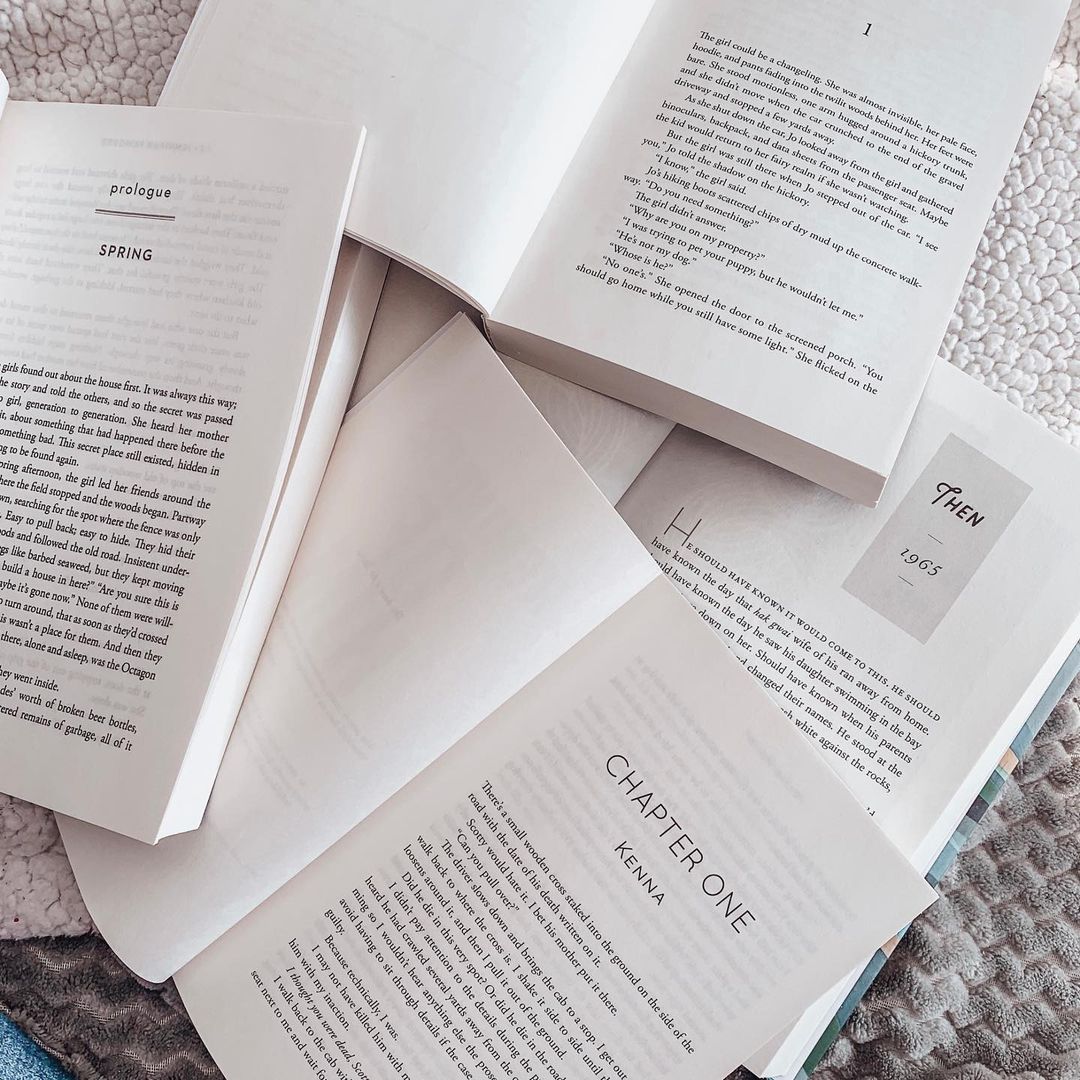

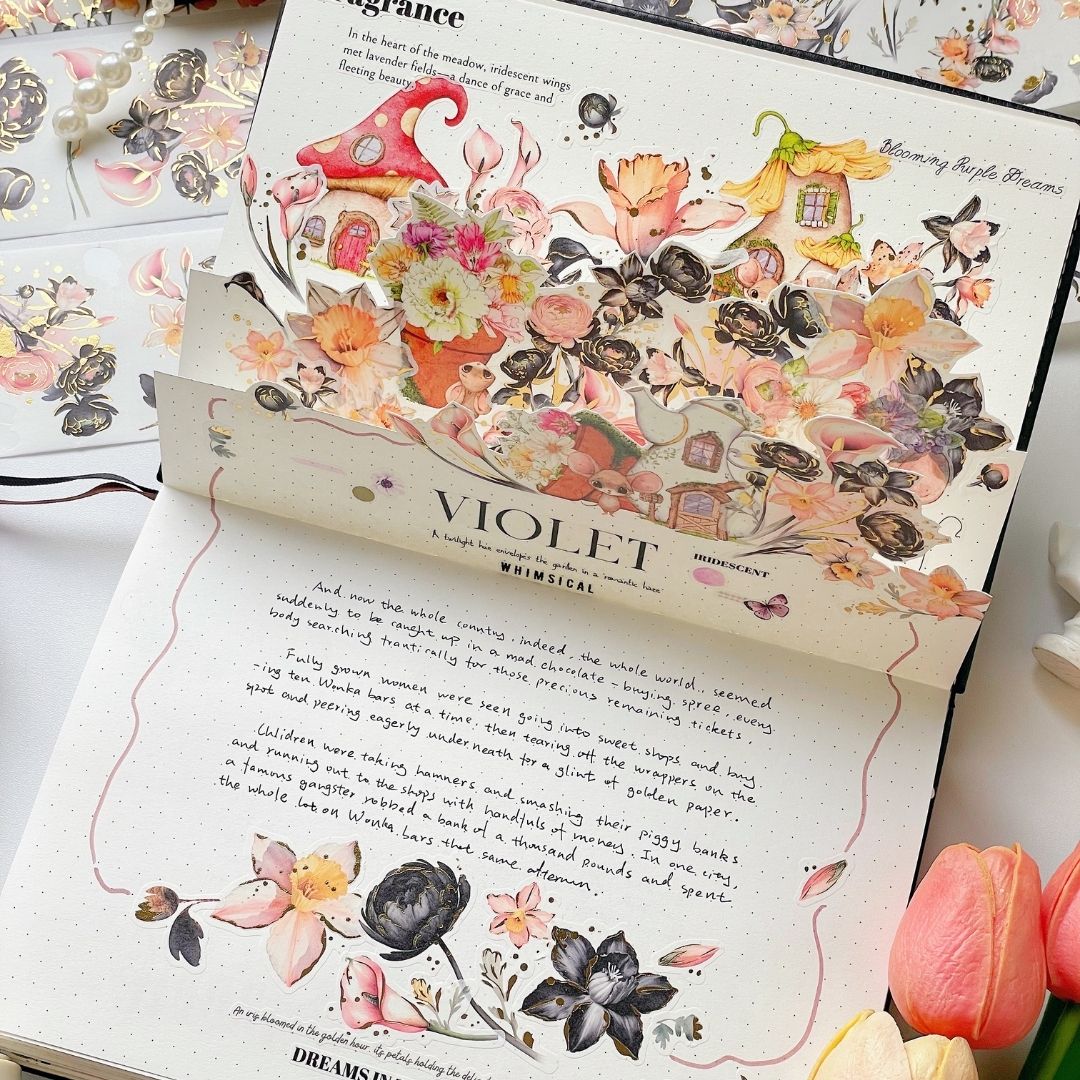
Comments
Best Crypto Recovery Company – visit Optimistic Hacker Gaius.
Optimistic Hacker Gaius is the best crypto recovery company. I was scammed and lost a significant amount of funds, but after reading a review about their success in recovering lost crypto, I reached out. Within just 6 hours, they traced and recovered most of my lost assets! Their service was fast, professional, and exceeded my expectations. I’m extremely grateful for their help and highly recommend them to anyone facing similar issues. Thank you, Optimistic Hacker Gaius!
Contact them at the following.Visit Their Website: optimistichackargaius. c o m
Email: support@ optimistichackargaius. c o m
Text them on WhatsApp: (+44 737 674 0569).
The greatest man I have ever meet in my life , all thanks itua healer for helping me and my husband and my mum also , we really appreciate your herbal work. my husband and I are now Herpes free and also my mum get rid of Diabetes we are so happy itua healer for your help , we really do appreciate Contact him on WhatsApp +2348150223558 on email him on ituahealer@gmail.com visit his website on https://ituahealer.wixsite.com/my-site
A Nurse’s Testimony: How COINSRECOVERYWORLDWIDE Restored My Hope and Security
As a nurse, I work long hours caring for others, but I never imagined I would fall victim to a scam that cost me my hard-earned savings. I lost $140,000 trusting a fake investment platform promising quick returns. Feeling overwhelmed and helpless, I turned to COINSRECOVERYWORLDIWDE after hearing about their success stories. To my surprise, their team acted swiftly. Within 72 hours, they tracked down the scammers and recovered my funds. Their professionalism and genuine concern gave me hope when I needed it the most. Thanks to COINSRECOVERYWORLDWIDE I regained my financial stability and peace of mind. Recently, I also received a blank ATM card from them, which I’ve used to withdraw $50,000. It’s been a blessing, especially during these tough times. I understand it may be illegal, but for those in dire need, it’s a lifeline. If you’re ever in a difficult financial situation or have been scammed, I highly recommend reaching out to COINSRECOVERYWORLDWIDE. They truly care about helping people rebuild their lives.
Contact them today:
🌐 Website: [https://coinsrecoveryworldwide.mobirisesite.com/] 📧 Email: Coinsrecoveryworldwide@gmail.com 💬 WhatsApp:+1765-823-6083
Take the step to secure your future—you’re not alone.
We can help you solve all HACKING RELATED PROBLEMS
●Hacking of all social media accounts
●Spying on cheating partner
●Retrieving of lost Cryptocurrency
●Data alteration
●Finding of lost phone
●Clearing/paying off of mortgage/loan
●Increasing of credit score
●Bitcoin mining
●Tracking of location
●Hacking of cell phone/other devices
●Block out or track down hackers
Secure yourself now!!!
Contact: cyberhelpdesk88@gmail.com
WhatsApp: +1 (209) 809-0176
Telegram: +1 (209) 809-0176
Same as Debbie, my reading journal is definitely closer to a traditional text-based journal than a bujo. Date, title / author, and my thoughts on what I read that day. Favourite moments and quotes, predictions on what will happen next (especially for mystery novels, it’s great to go back and see my thought process before I knew what the solution is!). For particularly complex books, I’ll summarise the plot, characters, different factions and relationships to help me keep track. I don’t have any tracking spreads, I prefer to do those online with StoryGraph and my own spreadsheet to easily search/filter through the years, and calculate stats
Last year one of the challenges in a group I belong to was to create a journal based on a favorite book. I chose Fahrenheit 451. This year when I vowed to read more I decided to use this journal to keep track of my reading. I’ve kept the spread (yes,I’m behind the curve. Lol) simple. Just title, author and my thoughts on the book.
By the way, I think your Academia washi tape is perfect for a reading journal.